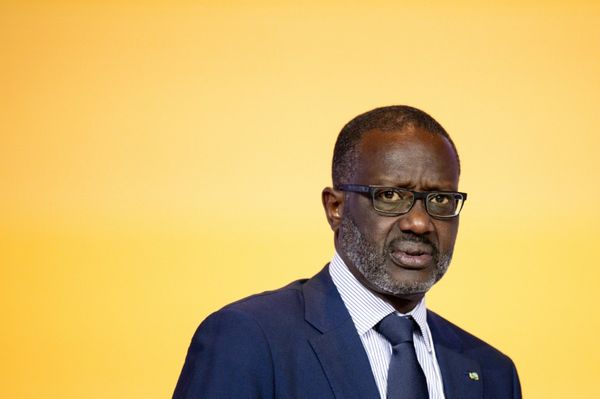
In Copenhagen’s futuristic UN17 Village, every structure and design has a reason for looking and feeling a certain way.
At first glance, its five buildings might look like uneven life-size Lego bricks. But their staggered position maximizes residents' access to sunlight, thanks to an AI tool. Each building is also a world of its own with a mix of demographics and a community manager tasked with bringing the community together for a “longer, healthier, and better” life.

It also has multiple common areas to promote co-living, as a community is central to good physical and mental health.
Most often, a real estate project is approved to meet a specific need—whether that’s housing, recreation, or office space. In the UN17 Village, a project spearheaded by €21 billion ($23 billion) Nordic investment fund manager Urban Partners, the objective was to responsibly rethink every aspect of a residential project. The project is the first in the world to incorporate all of the United Nations’ 17 Sustainable Development Goals (SDGs), which include economic growth and innovation.
Novo Holdings, the investment company behind the pharmaceutical giant Novo Nordisk, has a 25% stake in the 20-year-old Urban Partners.
For Claus Mathisen, the co-CEO of Urban Partners, the goal behind a pioneering project like the UN17 Village was to make urban life the solution, rather than the reason, for problems.
“We spend 95% of our time in or around buildings. So, it's a huge part of how society is built,” Mathisen told Fortune. “Civilization has decided to spend their time in cities. So, if you want to address civilization and society's issues, then you have to do it with the city.”

Cities are under immense pressure as over half of the world’s population lives in urban areas. That number is set to double by 2050, creating a supply crunch for affordable housing, public transportation, and more. These changes overlap with worsening climate change and mental health crises in cities.
Designing a place that aims to address 17 distinct challenges was not without its challenges, especially with private investors involved. Urban Partners also had to ensure the project was scalable beyond being a one-off innovation roadshow.
To ensure this, the group sifted through 300 different sustainability initiatives before narrowing them down and categorizing them across five buildings.
This took “a lot of trial and error,” Mathisen said. After years of work, it ultimately resulted in a housing development north of Copenhagen with 535 flats and roughly 1,100 residents.
Attention to small details was key in making the UN17 Village different from the average residential building. For instance, some staircases use shards of Carlsberg beer bottles for a unique look along with a type of building material called “FutureCem,” which is 30% less polluting than regular cement. FutureCem is also used in other structures within the project.
The kitchen and living room are separated by glass walls in the Kronen building so cooking particles don't settle on furniture.
Each building's roof has solar panels covering 1,291 sq. m., and an app allows users to access details on when power is cheapest.

Beyond technology, the project also prioritizes community-building to ward off loneliness. Each floor is designed to allow for more interaction—whether with balcony areas, communal kitchens, or multi-purpose lobbies to plan parties and yoga classes.
As nearly 40% of the residents are under 34 years old, one of the buildings, Noli Residences, offers apartments with leasing flexibility to attract expats living and working in Copenhagen. About 80% of the flats have Danish tenants.
The UN17 Village is a litmus test for how urban life can address society’s biggest concerns. It challenges how new buildings are designed while creating livable flats for families, young professionals, and the elderly.
“For most people who live there, it’s an apartment. It's not the 200 initiatives that went into making this apartment this living experience. It just happens to be an apartment with a community and some features around it,” Mathisen said.
Urban Partners declined to share how much was invested into the UN17 Village.
Winning the buy-in
Copenhagen is a haven of avant-garde urban projects. It is, after all, home to a grain silo-turned-luxury apartment building and a modern glass development shaped like the number eight called 8Tallet.
Nordhavn, or North Harbour, where Urban Partners’ office is located, is also an architectural turn-around story. Once an industrial port with sterile buildings, the area has become the new hotspot for urban design projects. It flaunts a bustling waterfront and a slew of restaurants and high-end offices. It was built to ensure essential amenities are accessible within five minutes.
While the Danish city is no stranger to imaginative urban planning, the UN17 Village was a big undertaking. Copenhagen's limited geography—17 times smaller than London by area—has restricted its housing supply in the face of urbanization.

Often, big cities solve this immediate problem by introducing more high-rise housing. However, given today’s world, it might be time to push the envelope on how you can solve more issues than one while opening up access to housing.
“What a project like UN17 represents is what I would call ‘livable density’ that is at a scale where you can accommodate meaningful population growth [and] address housing needs. But it's not only doing that through high-rise tower development,” said Jesse Shapins, Urban Partners’ co-head of neighborhood investments.
Urban Partners’ efforts with the UN17 project may seem utopian. Still, there are pieces from it that cities can apply in their planning today if public and private players collaborate with their citizens to make their urban projects come alive.
Urban Partners wants to inspire more developments in Denmark and beyond that are set up to address the challenges of today’s world.
Even if projects stick to a similar number of residents as the UN17 Village while transforming places like car parking lots, “the amount of housing supply that you could deliver to meet a growing city, like London, is enormous.”







